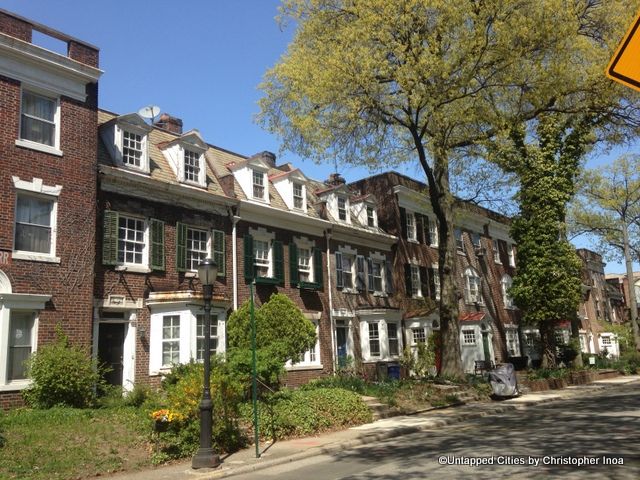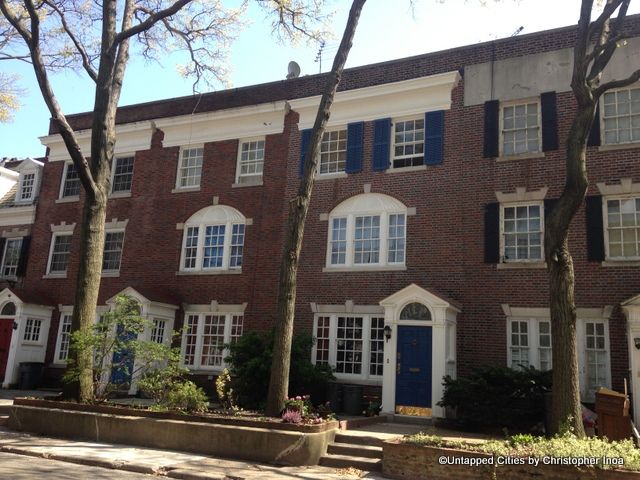Last Chance to Catch NYC's Holiday Notalgia Train
We met the voices of the NYC subway on our nostalgia ride this weekend!


On January 10th, 1978, the New York Landmarks Preservation Commission held a public hearing where 27 people testified in favor of having both Albemarle and Kenmore Terrace become an historical district. The two small conjoining cul-de-sacs in Flatbush, Brooklyn are home to numerous homes constructed in both Colonial Revival and English Arts & Crafts Styles.

Kenmore Terrace
This land can be traced back to the mid 1600’s, where Dutch settlers starting to build in the Flatbush area. Fast forward to the mid 1910’s, and Brooklyn architects Slee & Bryson were hired to build a row of townhouses to accommodate middle class families. Because of the 1876 Centennial Celebration in Philadelphia, the two architects, like many, wanted to construct homes that paid homage to America’s early days. The 12 houses that make up the terrace, alternate between two and a half and three story houses (which mirror each other). Built in 1916-17, the area has a much wider appearance because of the tress being planted not on the curb, but rather inside the home gardens.

Kenmore Terrace
Two years later, Slee & Bryson would start building the houses that would make up Kenmore Terrace. Three of the homes were made in the same Colonial Revival Style as Albemarle, suggesting that the original plan for Kenmore was for it to be a mirror image of Albemarle. However, the other six, were made in a different style: a revival of English Arts and Crafts style. The differences in style came from The Garden City Movement which originated in England and made its way to the United States. It was a mixture of both suburban and urban architectural, and focused on tradition in terms of craftsmanship.
When more middle class families started to purchase cars for their families, the latter six houses in Kenmore Terrace were built with a car ramp and personal garage because of space concerns. This practice, though, was uncommon in the early days of the automobile. It’s because of the addition of these personal garages that some of the houses on Kenmore Terrace are wider than those on Albemarle.

Albemarle Terrace

Albemarle Terrace
As stated in its designation report, this historical district with its multiple architectural styles is “typical of one or more eras in the history of New York City.” On January 10th, 1978, the Albemarle-Kenmore Terraces in Flatbush, Brooklyn gained landmark status, and then by 1983, the Terraces were listed in the National Register of Historic Places.
For more on the history of NYC neighborhoods, check out our History of Streets archive and our articles about historic districts.
To talk to the author of this story, get in touch with him on twitter @ChrisLInoa
Subscribe to our newsletter